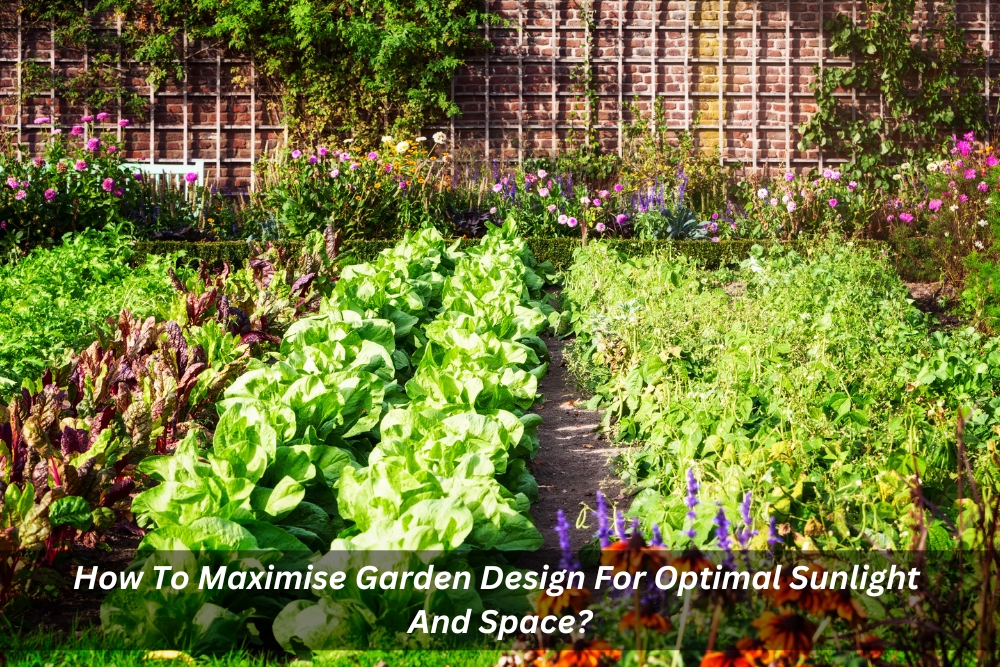When it comes to creating a stunning garden in Australia, especially in the context of small spaces, the challenges can be unique. With the right small garden designs, you can transform even the tiniest outdoor areas into vibrant and inviting spaces. In this article, we’ll explore the best small garden designs for Australia, how to maximise sunlight, utilise vertical space, offer landscaping tips, and help you find the right landscaping services without breaking the bank.
What are the best small garden designs for Australia?
Australia’s diverse climate zones make it a gardener’s paradise. From the tropical north to the temperate south, every region offers its unique gardening opportunities. When it comes to small garden designs, it’s essential to choose designs that are suitable for your local climate.
- Native Australian Gardens: Embrace the beauty of native Australian plants in your small garden. These plants are well-adapted to the local conditions and require minimal maintenance. They also attract native wildlife, making your garden a haven for birds and insects.
- Mediterranean Gardens: For areas with a Mediterranean climate, like parts of Western Australia and South Australia, Mediterranean garden designs work beautifully. Think lavender, rosemary, and olive trees, creating a fragrant and visually appealing space.
- Vertical Gardens: In small spaces, vertical gardening is a game-changer. You can grow herbs, succulents, or even vegetables on walls and trellises. This maximises space and adds a unique design element to your garden.
- Japanese Zen Gardens: Minimalist and calming, Japanese Zen gardens are perfect for small spaces. Incorporate carefully arranged rocks, sand or gravel, and bonsai trees to create a tranquil oasis.
- Container Gardens: If you possess a small balcony or patio, container gardening presents a flexible option. It allows for the cultivation of various plants in pots and containers, such as flowers, herbs, and vegetables.
- Courtyard Gardens: In urban areas, courtyard gardens are popular choices. They are typically walled or fenced and can be designed with various themes, from modern to traditional.
- Edible Gardens: Growing your food can be both rewarding and space-efficient. Consider raised beds or even vertical gardening for vegetables and herbs.
How can you maximise sunlight in your small garden?
In Australia, sunlight is abundant, but not all small gardens receive optimal sun exposure. To make the most of the available sunlight, consider these strategies:
- Select the right plants: Select plant varieties that flourish according to the specific lighting conditions of your garden. Plants that thrive in full sun, including succulents and lavender, typically demand a minimum of 6 hours of direct sunlight daily, whereas plants that prefer shade, such as ferns and hostas, can prosper with less light.
- Prune and thin: Regularly trim overgrown trees and shrubs to ensure sunlight reaches the ground. Remove dead or overcrowded branches to encourage healthy growth and improve light penetration.
- Strategic plant placement: Position taller plants on the north side of your garden to avoid shading shorter plants. Use reflective surfaces like white walls or light-coloured paving to bounce sunlight back onto your plants. This step is crucial when you prepare a Sydney garden for spring, ensuring that your plants receive ample sunlight for their seasonal growth.
- Install a mirror or sun catcher: Mirrors or decorative sun catchers can be used to reflect and amplify sunlight in your garden. They add a touch of elegance while making your space brighter.
- Use light-coloured materials: Opt for light-coloured mulch, gravel, or paving materials. These surfaces will reflect light and brighten your garden. Dark materials absorb heat and can create a harsh environment for your plants.
- Vertical gardening: When floor space is limited, consider going vertical. Vertical gardens receive ample sunlight and can host various plants, adding greenery without taking up valuable ground space.
- Sun tracking: To maximise sunlight, be aware of the sun’s movement throughout the day and year. This will help you determine where to place your plants and garden features for optimal sun exposure.
How can you use vertical space to save space in your small garden designs in Australia?
Vertical space is a precious resource in small gardens. It not only adds visual interest but also increases the overall growing area. Here are some creative ways to utilize vertical space in your garden:
- Vertical Planters: Hanging planters, wall-mounted pockets, and trellises are excellent options for growing plants vertically. You can cultivate herbs, flowers, or even strawberries in these containers, saving ground space.
- Espalier Trees: Espalier is a technique of training trees to grow flat against a wall or fence. Fruit trees, such as apple or pear, are commonly espaliered, creating both an attractive and functional feature in your garden.
- Climbing Plants: Use climbing plants like jasmine, clematis, or ivy to cover walls or fences. They add texture and colour while taking advantage of vertical space.
- Vertical Shelving: Install wall-mounted shelves to display potted plants and garden décor, or even create a small outdoor library. This adds a personalized touch to your garden.
- Green Walls: If you’re looking for a more advanced solution, consider installing a green wall system. These systems can be customised and provide a lush, vertical garden display.
- Hanging Gardens: Hang plants from pergolas, overhangs, or hooks. This not only maximises vertical space but also adds a dynamic element to your garden.
- Repurpose Items: Get creative by repurposing items like old ladders, wooden pallets, or shoe organisers to create vertical gardens. These DIY solutions can be cost-effective and fun to make.
What are some landscaping tips for small gardens in Australia?
Landscaping plays a pivotal role in creating an aesthetically pleasing and functional small garden. Here are some tips to enhance your small garden’s appeal:
- Plan with purpose: Prioritise your garden’s main purpose. Whether it’s a relaxing oasis, an entertainment area, or a productive vegetable garden, design your space with a clear intention.
- Scale and proportion: Choose plants, furniture, and features that are proportionate to your garden’s size. Oversized elements can make your space feel cramped, while undersized ones can get lost.
- Layer your plants: Arrange your plants in layers, with taller ones at the back and shorter ones at the front. This creates depth and a sense of space in your garden.
- Focal points: Incorporate focal points like sculptures, water features, or colourful flower beds to draw the eye and create visual interest.
- Paving and paths: Use materials like stone or gravel to create defined paths and seating areas. This not only adds structure but also makes your garden more accessible.
- Drought-tolerant plants: In many parts of Australia, water conservation is essential. Choose drought-tolerant plants that require less water, such as kangaroo paw, grevillea, or agave.
- Outdoor lighting: Extend your garden’s usability into the evening with well-placed outdoor lighting. It not only adds ambience but also enhances safety.
- Low-maintenance design: Consider a low-maintenance garden design if you don’t have the time or energy for extensive upkeep. Native plants are often a great choice for this.
How can you find landscaping services for small gardens in Australia?
Once you’ve decided on your garden design, you may need the assistance of a professional landscaper to bring your vision to life. Here’s how you can find the right landscaping services for your small garden in Australia:
- Local directories and reviews: Look for local landscaping companies in directories or online platforms. Check their reviews and ratings to get an idea of their reputation and quality of work.
- Ask for referrals: Consider asking for suggestions from friends, neighbours, or coworkers who have previously utilised landscaping services. Personal endorsements frequently result in dependable and credible service providers.
- Consultation and quotes: Contact multiple landscapers for consultations and quotes. Discuss your garden design ideas and budget to find a landscaper who understands your vision and works within your financial constraints.
- Portfolio and experience: Review the portfolios of potential landscapers to gauge their style and expertise. Look for experience in designing and maintaining small gardens, ensuring they have the necessary skills for your project.
- Licensing and insurance: Ensure that the landscaper you choose is licenced and adequately insured. This protects you from liability in case of any accidents or damage during the project.
- Communication and transparency: Choose a landscaper who communicates effectively and is transparent about the project timeline, costs, and any potential challenges that may arise.
How much does it cost to hire a professional landscaper for small garden designs in Australia?
The cost of hiring a landscape designer in Australia varies depending on various factors, including the scope of the project, the complexity of the design, and the location. Additionally, the experience and reputation of the designer can also influence the cost. To get an accurate estimate, it’s advisable to consult multiple landscape designers and request detailed quotes based on your specific requirements. By comparing these quotes, you can make an informed decision that aligns with your budget and design expectations.
Conclusion
Designing a small garden in Australia requires thoughtful planning and creative solutions to maximise space and sunlight. By implementing the right small garden designs, utilising vertical space, and incorporating suitable plants, you can create a stunning outdoor retreat even in the most limited spaces. Whether you’re a gardening enthusiast or a beginner, the key is to understand your local climate, choose the right plants, and, if necessary, seek professional landscaping services that align with your vision and budget. With these strategies in mind, you can transform your small garden into a flourishing and visually appealing haven that you can enjoy year-round.
Ready to turn your small garden into the sunlit oasis of your dreams? A1 Gardening & Landscaping Sydney Sydney is your trusted partner in bringing your garden’s full potential to life. With expertise in small garden designs tailored for the unique climate of Australia, we’ll help you maximise sunlight, utilise vertical space, and craft a visually appealing landscape that suits your style and budget. Our professional landscapers understand the local conditions and offer transparent, cost-effective solutions to transform your small space into a vibrant haven. Contact us today to begin your journey towards a more beautiful and functional small garden in Sydney. Your outdoor paradise awaits!

